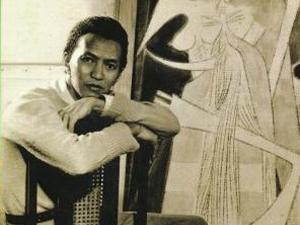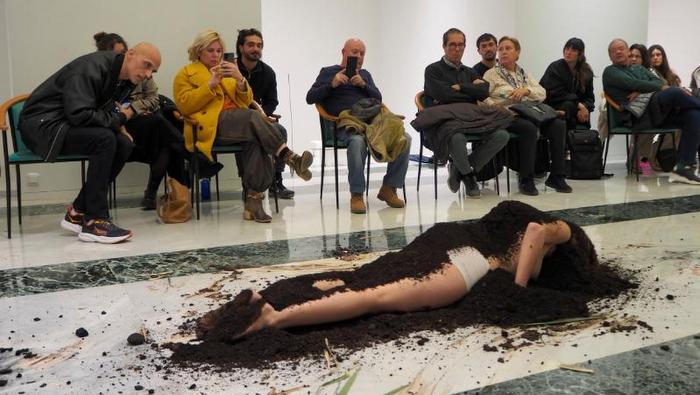The great retrospective the Reina Sofía Museum of Madrid dedicates to Cuban Wifredo Lam proposes an ambitious re-reading of his work through almost 250 pieces that make possible to widely appreciate the different aspects of one of the most fascinating artists of the 20th century.
Lam’s work has relations with many places at the same time in “a kind of internal and external exile”, explained.
The tour, divided in five big groups, tries to relocate his work into the history of international art and to give special attention to the progressive periods of a work built among Spain, France, Italy and Cuba.
Spain (1923-1938) deals with a period when the artist progressively frees himself from the academic practice learned in Havana and in the Madrid’s Fine Arts Academy.
He discovers the works of Gris, Miró and Picasso in the Exposición de pinturas y esculturas de españoles residentes en París, in 1929 in Madrid, like the paintings of Gauguin, the German expressionists and Matisse, which he consulted in catalogs and magazines that helped him to simplify forms in big surfaces of uniformed colors.
The works he created in Madrid, Cuenca, León, Malaga and Barcelona,and which he had left with friends when he fled rashly to France after having committed with the Republican forces, reappeared after the artist’s death who thought they were lost.
According to the organizer, these works “reveal a long and difficult learning at the colonial ex-metropolis”.
In Paris-Marseille (1938-1941), Lam discovered the influence of the African statuary in the European art, claimed by the avant-garde and Picasso. This way, the faces of his characters turned into geometric masks.
Cuba and América (1941-1952) includes the period in which the artist returned to his country where he was shocked by the corruption, racism and misery.
His work appears full of syncretic figures that join the vegetal, the animal and the human aspects, reproducing the spiritual world characteristic of the Caribbean cultures.
Lam “was impressed by the Santeria but in a graphic level, not the in the practical one. Lydia Cabrera taught him much, although he was not religious in any sense”, remembered the artist’s son.
Between 1952 and 1967, Lam traveled a lot to Paris, Caracas, Havana, Albissola (Italy) and Zurich, moving away from his workshop frequently. During his stay in Paris, his friend Asger Jorn introduced him to artists CoBrA, with whom he made several exhibits.
The interest of the group for the popular art took him to face new materials as terracotta and to experience new forms.
In 1962 he established in Albissola, ceramics center, where he lived until his death in 1982. Seduced by the liberation of the work with terracotta and for the intervention of fate in the creation process, he produced almost three hundred ceramic pieces during 1975, the symbols of which referred to his paintings and drawings.
Those years are also marked by his travels to Egypt, India, Thailand, Mexico and an increasing institutional recognition for his autobiographic work “El nuevo Nuevo mundo de Lam”.
Source: Cubadebate















